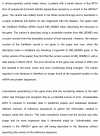Locus Reference Genomic sequences: an improved basis for describing human DNA variants
- PMID: 20398331
- PMCID: PMC2873802
- DOI: 10.1186/gm145
Locus Reference Genomic sequences: an improved basis for describing human DNA variants
Abstract
As our knowledge of the complexity of gene architecture grows, and we increase our understanding of the subtleties of gene expression, the process of accurately describing disease-causing gene variants has become increasingly problematic. In part, this is due to current reference DNA sequence formats that do not fully meet present needs. Here we present the Locus Reference Genomic (LRG) sequence format, which has been designed for the specific purpose of gene variant reporting. The format builds on the successful National Center for Biotechnology Information (NCBI) RefSeqGene project and provides a single-file record containing a uniquely stable reference DNA sequence along with all relevant transcript and protein sequences essential to the description of gene variants. In principle, LRGs can be created for any organism, not just human. In addition, we recognize the need to respect legacy numbering systems for exons and amino acids and the LRG format takes account of these. We hope that widespread adoption of LRGs - which will be created and maintained by the NCBI and the European Bioinformatics Institute (EBI) - along with consistent use of the Human Genome Variation Society (HGVS)-approved variant nomenclature will reduce errors in the reporting of variants in the literature and improve communication about variants affecting human health. Further information can be found on the LRG web site: http://www.lrg-sequence.org.
Figures
References
-
- HGVS sequence variation nomenclature. http://www.hgvs.org/mutnomen/
LinkOut - more resources
Full Text Sources
Research Materials
Miscellaneous




